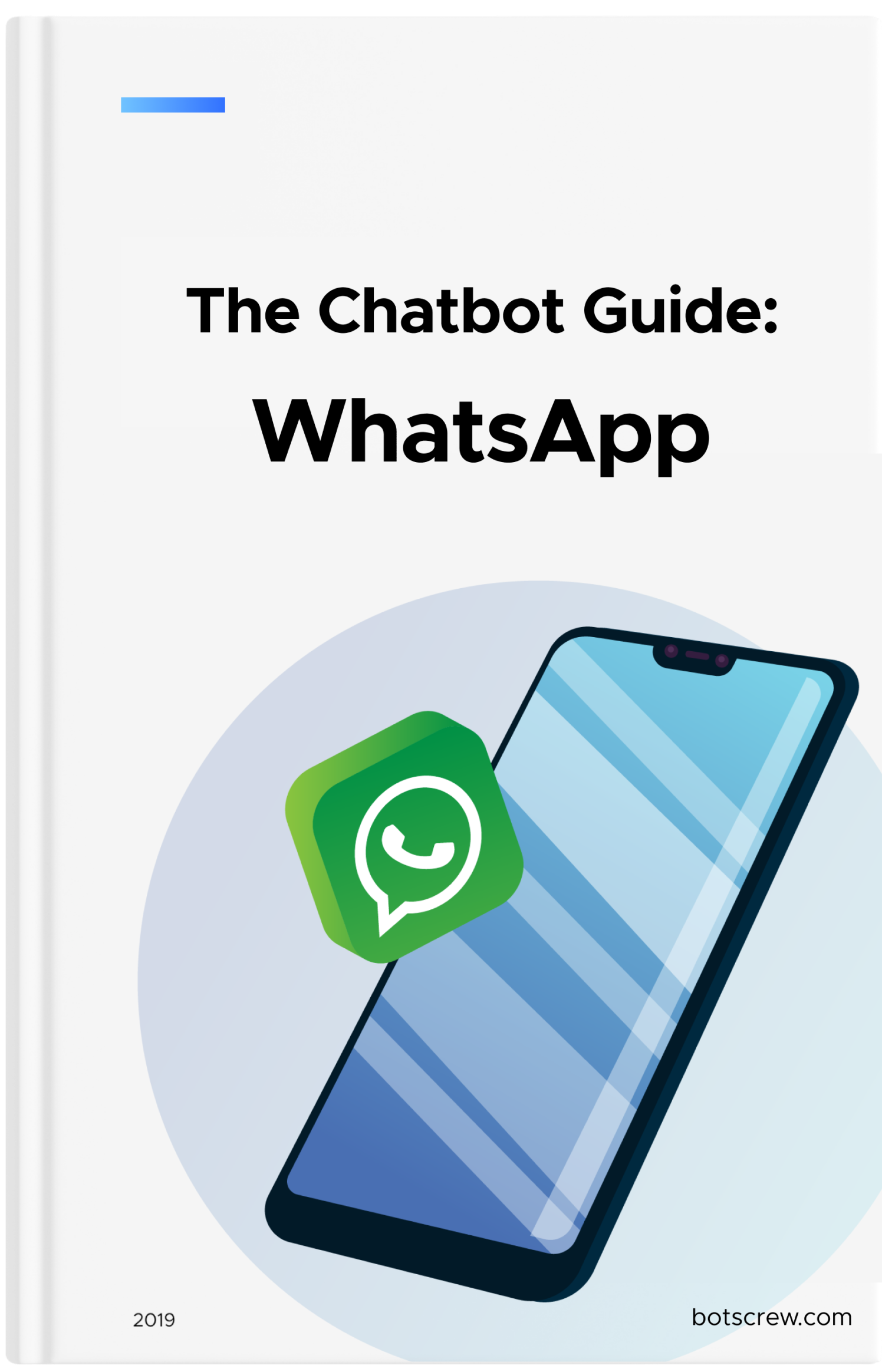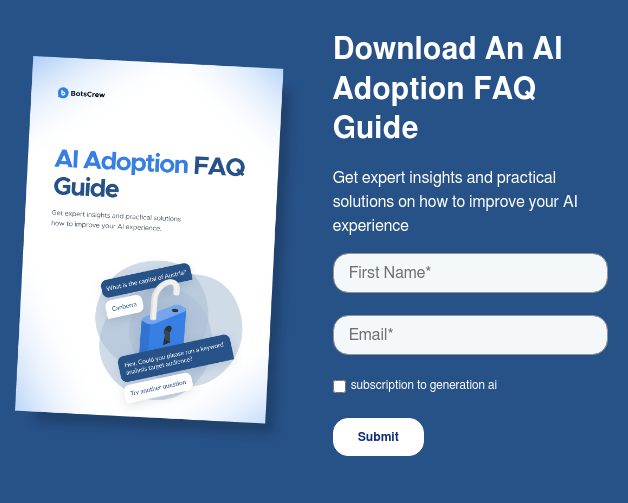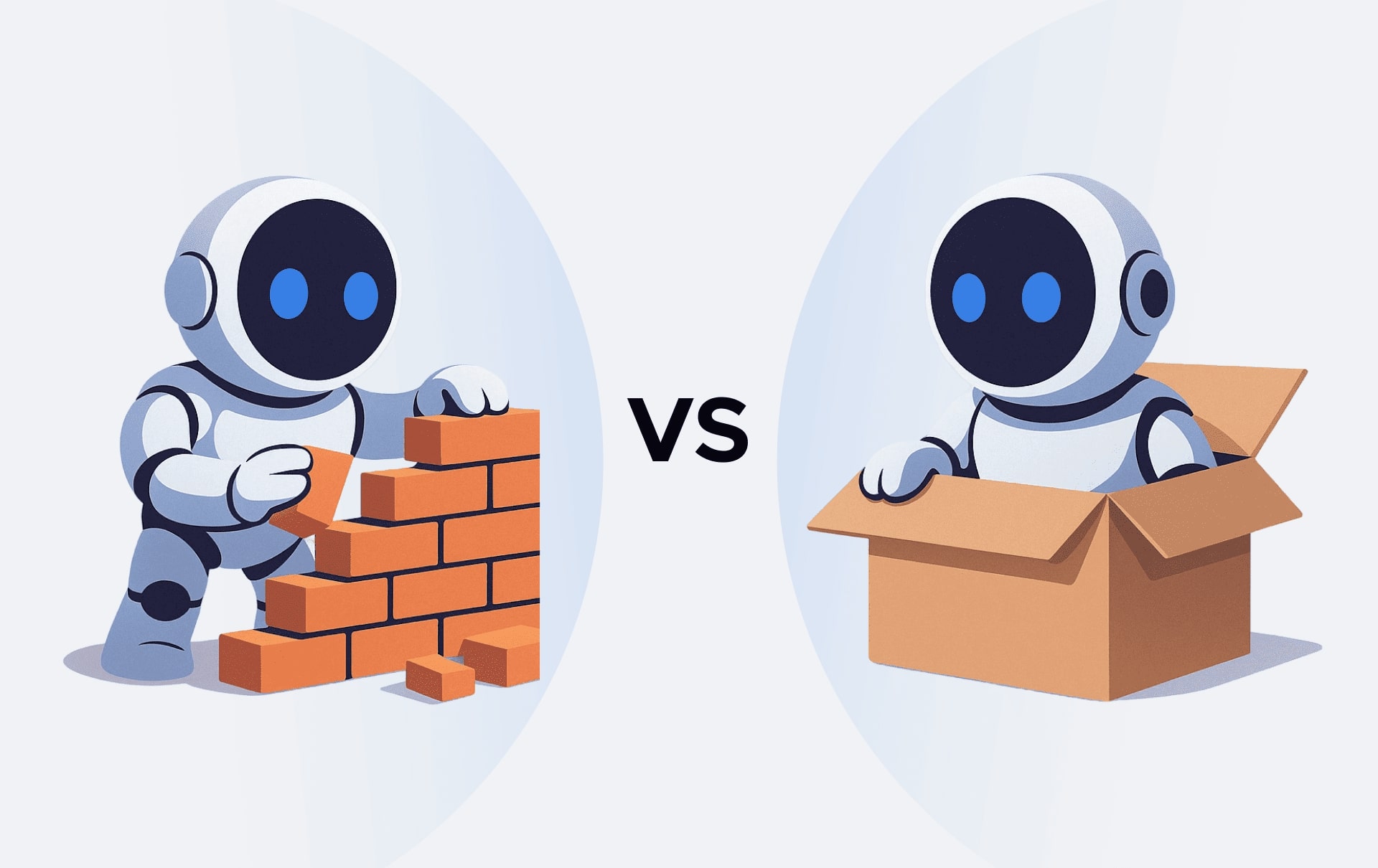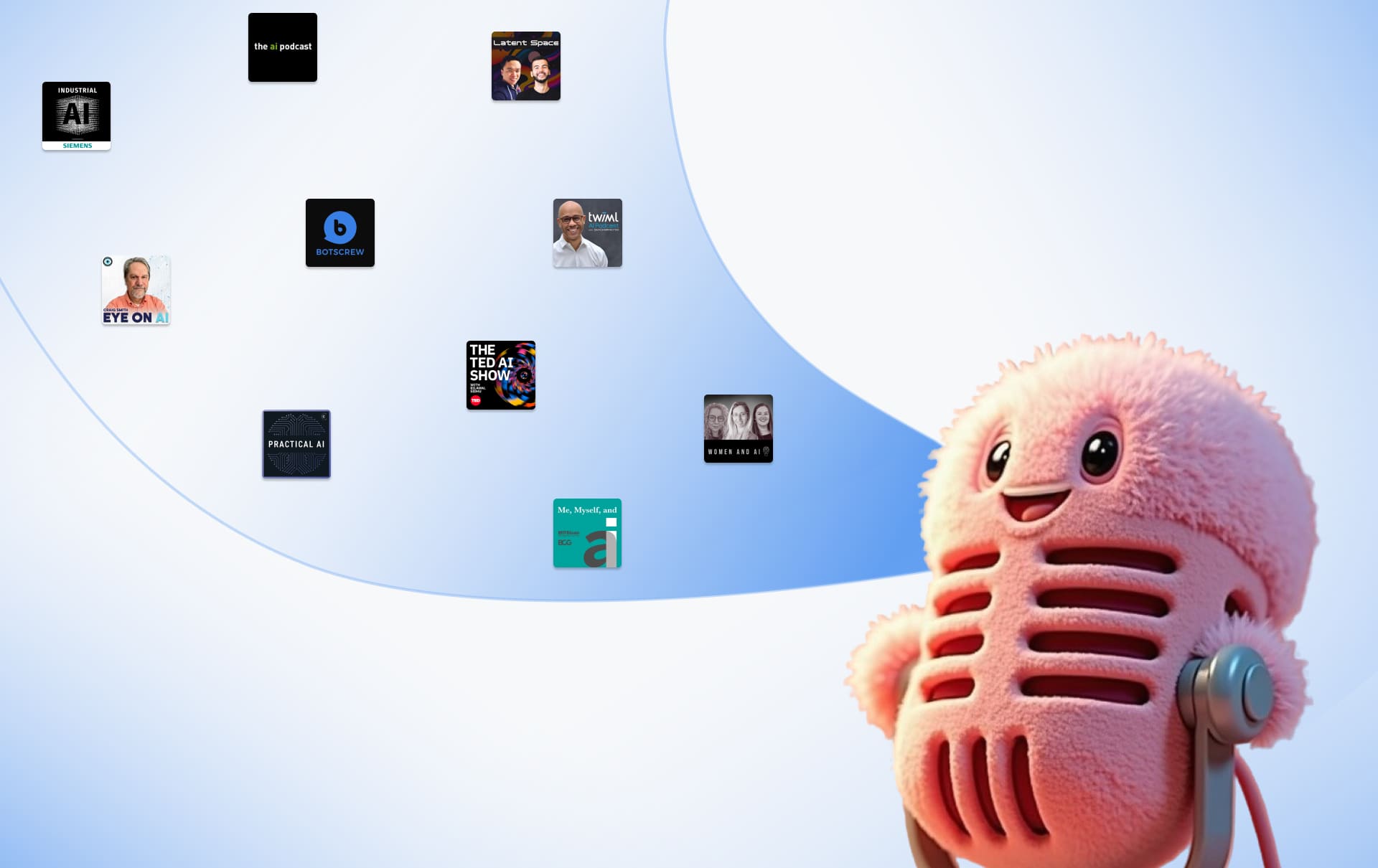How AI Can Enhance HR Management: A Comprehensive Guide
👀 In just 1 business day, an AI service can survey 100,000 clients, and in 3 days, conduct the onboarding with AI, build an entire development team. Explore how AI is reshaping HR — automating time-consuming admin tasks, simplifying global compliance, and enhancing operational efficiency with greater accuracy and speed — and should HR professionals be worried?
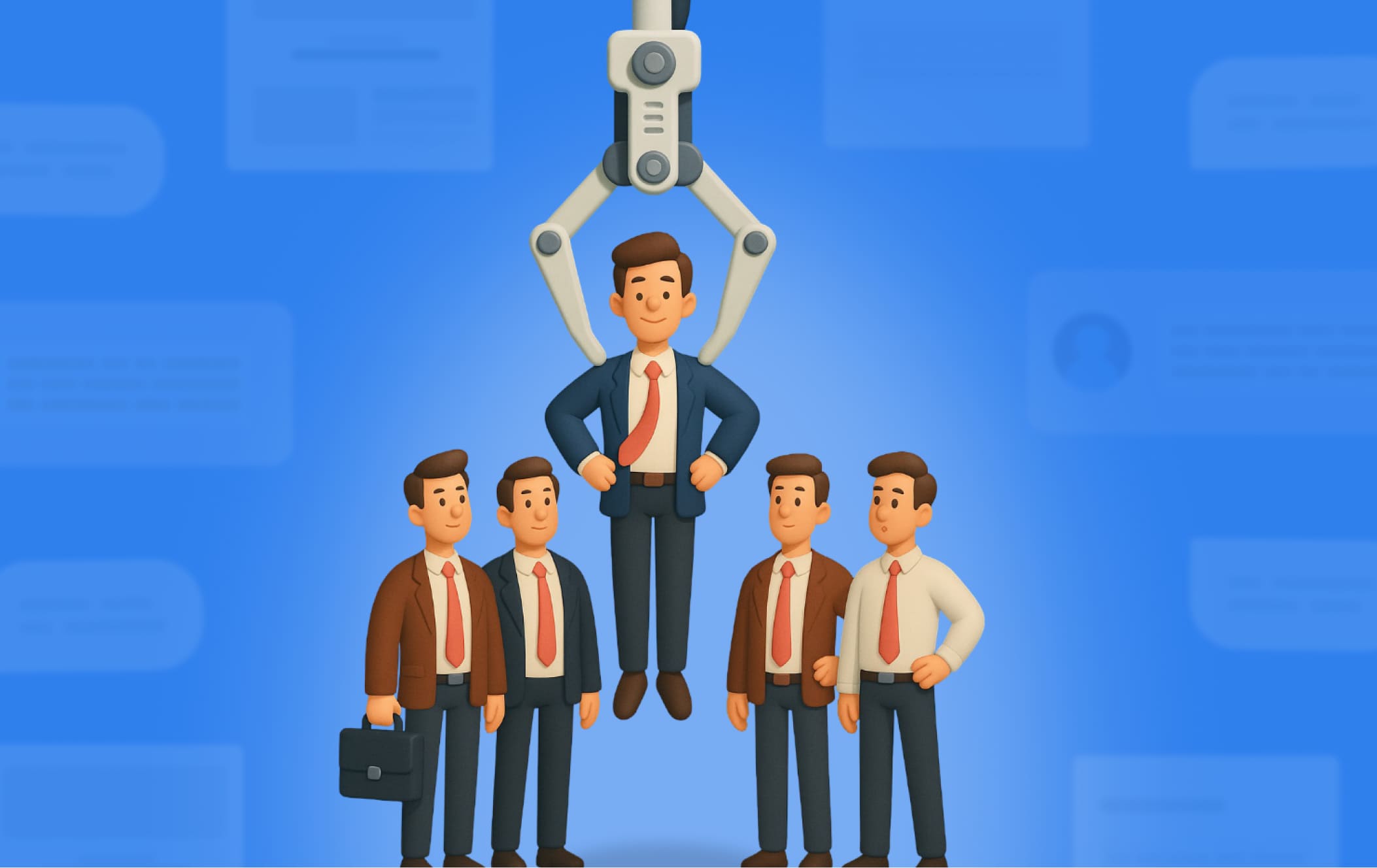
From the moment a candidate clicks "Apply" to the day they step into a leadership role, AI has the potential to enhance every step of the employee journey. When thoughtfully implemented, artificial intelligence can streamline HR processes including onboarding with AI without losing the human connection. And it's already happening.
According to a 2024 SHRM survey, 26% of organizations are actively using AI to support HR-related activities.

The 2024 Lattice State of People Strategy Report reveals just how varied the AI adoption landscape really is:
- 15% of organizations have implemented AI for HR-related tasks to boost efficiency
- 23% are actively exploring how to deploy AI in their teams
- 38% are discussing AI informally but have not taken specific steps yet
- 24% haven't yet considered it at all.
But how does AI actually fit into HR operations? And how can organizations adopt onboarding with AI responsibly? Let's explore real-world ways HR teams are already using AI to reshape the workplace, and why now is the time to pay attention to HR chatbot development services.
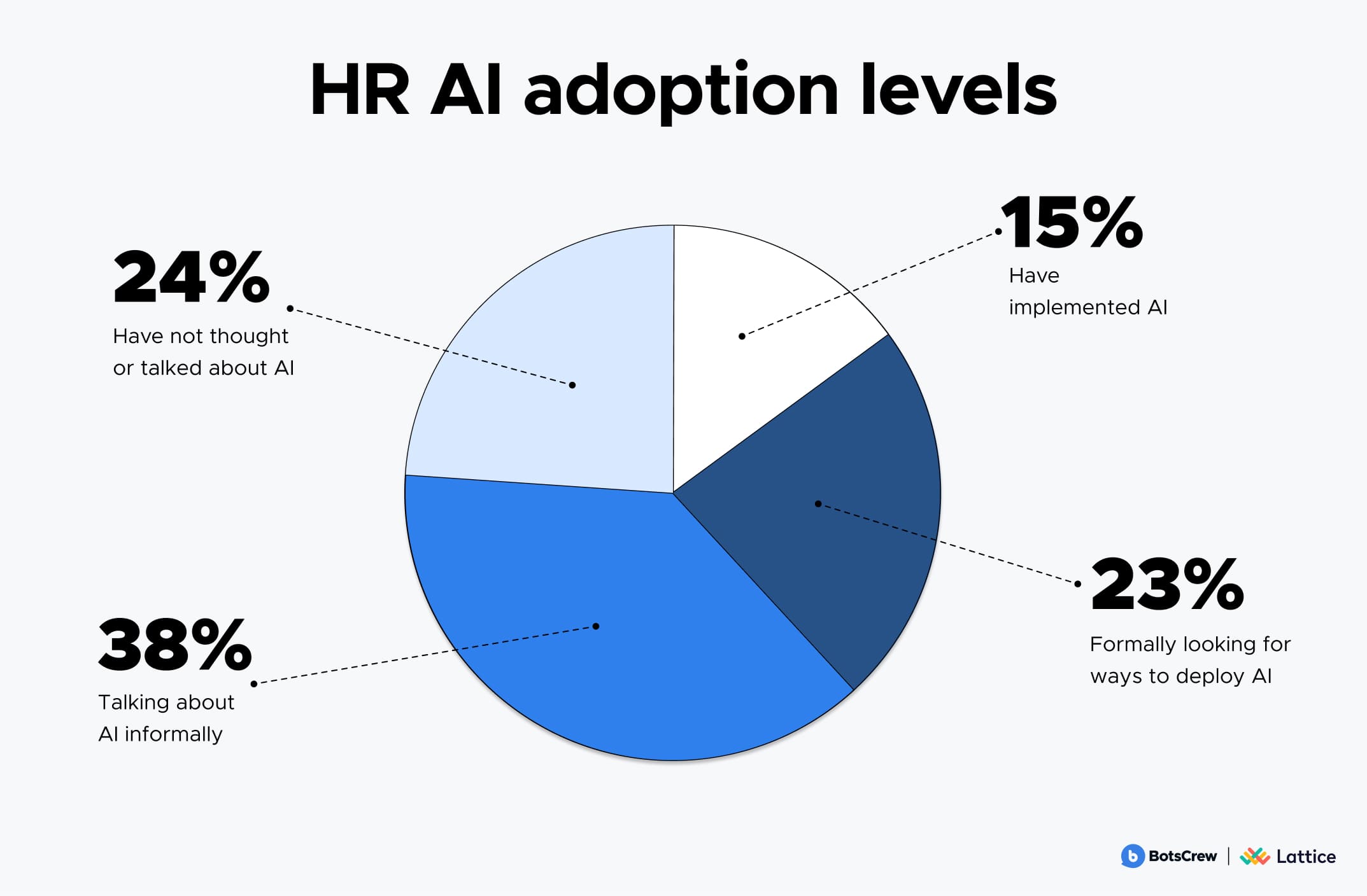
Why AI Is a Game-Changer for HR Teams
By taking over routine, repetitive tasks, AI gives HR professionals the freedom to focus on what drives business value: building strong talent pipelines, developing future leaders, and shaping workplace culture. It enables HR to move from reactive problem-solving to a proactive people strategy. Here is how AI is transforming HR departments — from operational backbone to innovation engine:
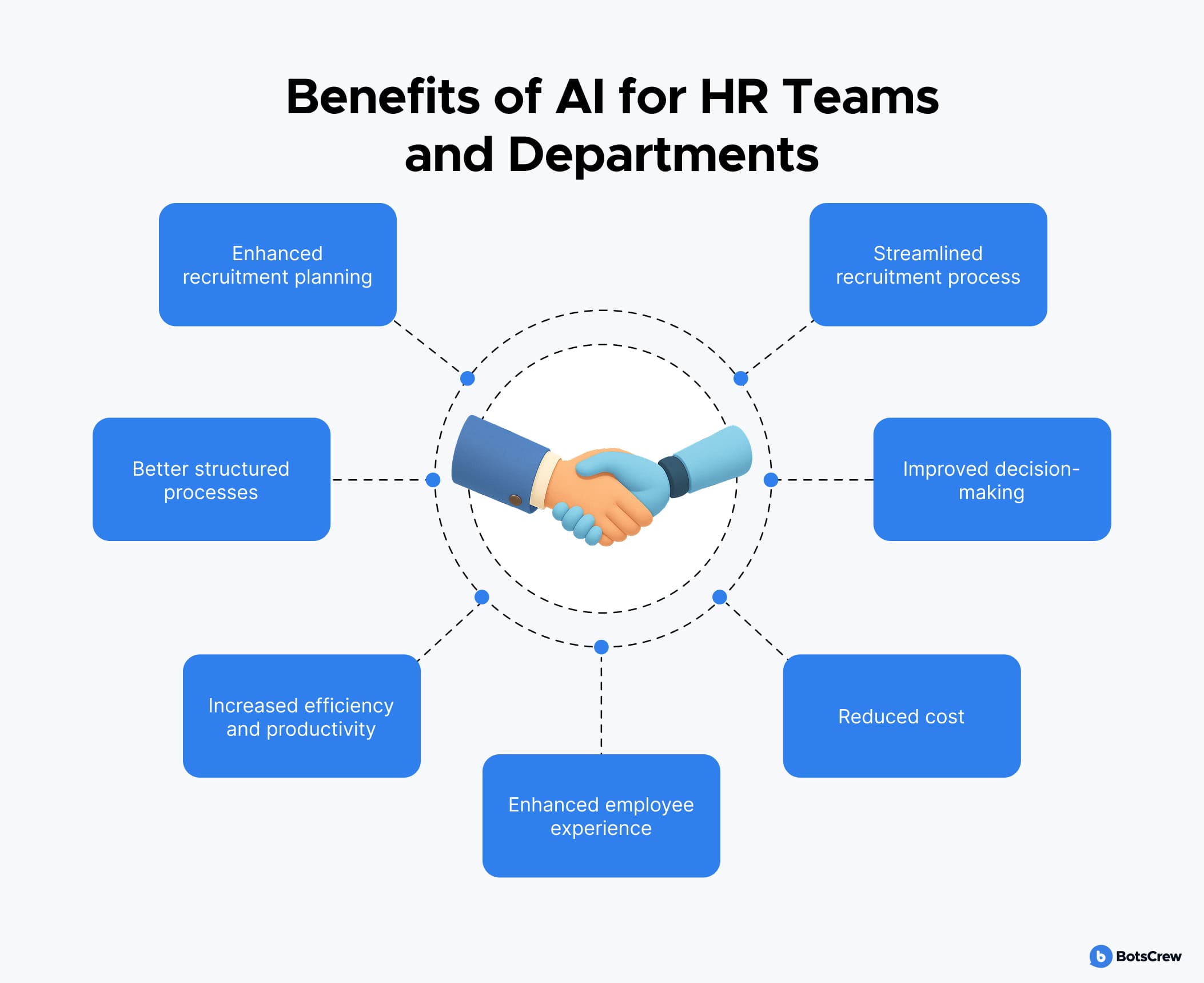
Enhanced Recruitment Planning & Streamlined Recruitment Process
Deloitte reports that recruiters spend 93% of their time on repetitive, routine tasks — from screening CVs to scheduling interviews. At the same time, 65% of these tasks could be automated, freeing up time for recruiters to focus on what really matters.
AI-powered tools accelerate the automation of HR processes in recruitment: sourcing, screening, shortlisting, and even conducting initial video interviews using natural language processing and facial expression analysis. Furthermore, with predictive analytics, HR leaders can anticipate staffing gaps before they appear and adjust hiring strategies accordingly. Instead of scrambling to fill roles, teams can proactively build pipelines and align talent with long-term business goals.
Better-Structured Processes
From the moment a candidate accepts an offer, AI can personalize and automate key workflows:
- Automatically generate and manage digital contracts
- Respond instantly to new hire questions via AI-powered chat
- Flag missing documents or incomplete compliance training in real time
- For organizations operating in regulated industries, AI can automate document checks and audits, helping HR teams stay compliant during hiring by ensuring all necessary legal requirements are met from day one.
- Suggest individualized learning paths based on role and performance data
- Surface trends in AI onboarding effectiveness through intelligent reporting.
This level of structure reduces errors, increases transparency, and ensures every new hire feels supported from day one.
Improved Decision-Making
By analyzing vast datasets across performance reviews, engagement surveys, learning histories, and even communication patterns (with consent and ethical oversight), AI uncovers insights that would otherwise go unnoticed.
It can flag high-potential employees who may not be on leadership's radar yet, helping organizations nurture talent early and equitably. It can also detect emerging skill gaps across departments, allowing HR to launch targeted upskilling initiatives before performance or productivity takes a hit.
AI can identify subtle behavioral shifts that often precede a resignation — like declining engagement, missed development opportunities, or internal mobility bottlenecks. With this knowledge, HR can intervene early, offering re-engagement strategies or career pathing options that align with employee needs and aspirations.
Increased Efficiency and Productivity
When AI takes over admin-heavy tasks like payroll queries, leave management, CV screening, and AI-driven onboarding processes, HR professionals gain back valuable time. That time can be reinvested into work that shapes culture, builds leadership, and drives transformation. An EX Trends report also reveals that 79% of HR and IT leaders agree that AI enhances work quality.
Unilever, receiving over 1 million applications annually, used AI to analyze candidate videos and responses. Time-to-hire was reduced by 75%, while candidate diversity experienced a significant and measurable uplift.

Reduced Costs
By automating repetitive administrative tasks, onboarding automation, and optimizing workforce planning, HR teams can reduce operational costs without compromising on quality or employee experience. Imagine a quick-service restaurant chain leveraging AI to optimize staffing.
By analyzing foot traffic patterns, employee availability, and historical sales data, the system can forecast demand with precision and automatically generate smarter shift schedules. The result? Reduced overtime, fewer idle hours, and lower labor costs — potentially cutting unnecessary expenses by up to 25% — while also improving customer service through better coverage during peak times.
AI also minimizes costs tied to human error, onboarding delays, and compliance risks — savings that scale with the size of the organization. In the long run, these efficiencies compound, allowing HR budgets to stretch further and support more strategic initiatives.
Enhanced Employee Experience
Where once personalization was only feasible in small, close-knit teams, today's AI tools allow HR departments to tailor the employee experience for thousands. For instance, intelligent learning platforms can recommend career development paths based on an employee's role, performance trends, and long-term goals. Instead of generic training modules, employees receive relevant, just-in-time content that accelerates their growth.
AI can also monitor anonymized behavioral signals — like digital fatigue or decreased engagement — and trigger tailored nudges, such as wellness tips, calendar breaks, or referrals to support resources. This proactive approach to wellbeing helps prevent burnout before it starts. Ultimately, when employees feel recognized, supported, and developed on a personal level, engagement improves organically.
Ready to transform your HR experience? See how AI can streamline your processes, reduce bias, and boost employee engagement.
AI in HR operates on three levels:
🙋🏻 Individuals. Low-risk, high-value support — like saving time with AI-generated feedback suggestions or training reminders.
👥 Teams. Workflow and process enhancement — AI complements skills, flags gaps, and streamlines collaboration.
🏢 Enterprises. Large-scale strategic decisions — like workforce planning and policy automation. Benefits are massive, but ethical and operational risks must be carefully managed.
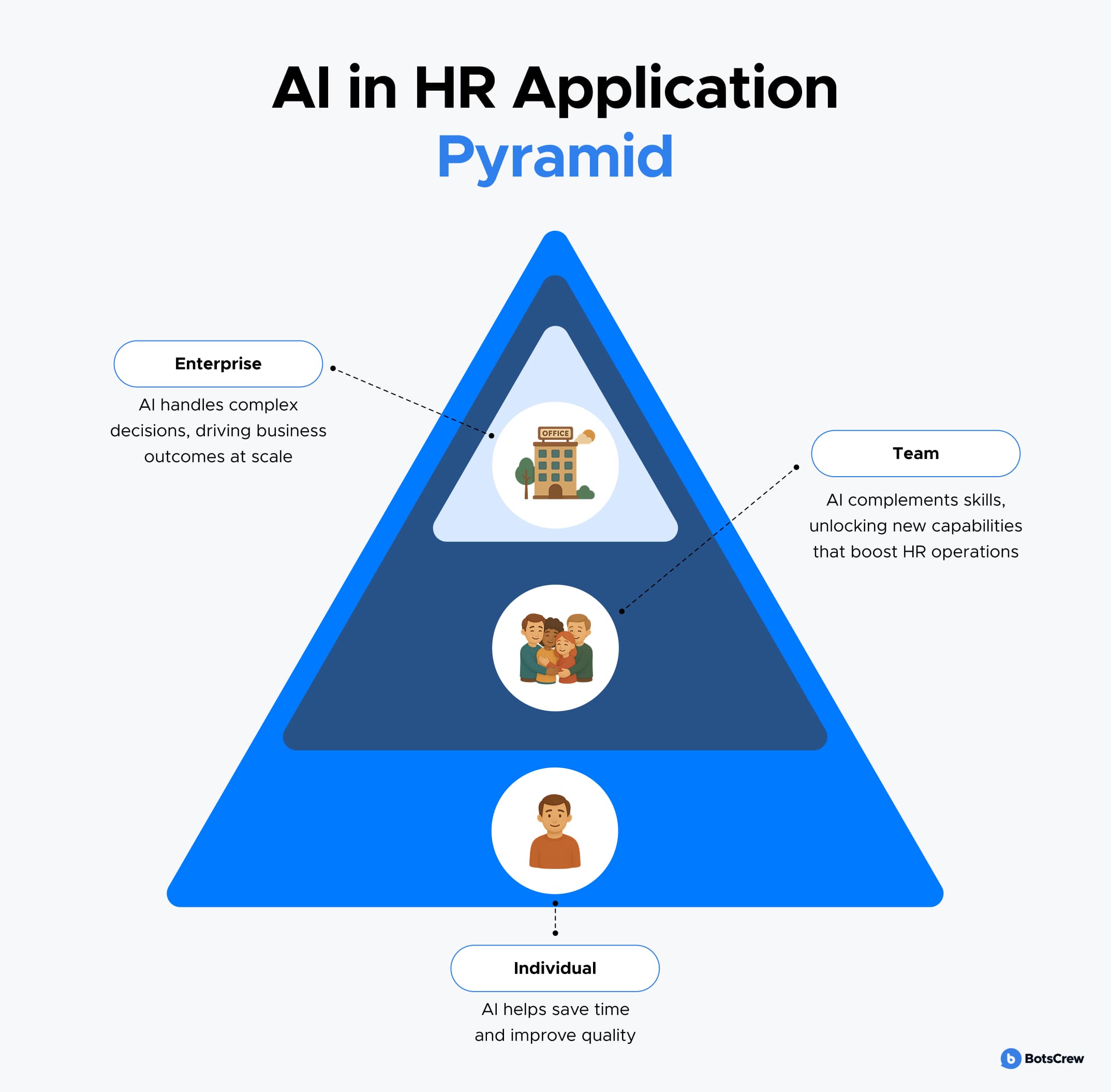
Key Areas Where AI Is Revolutionizing HR
According to a recent Aon survey of nearly 400 HR professionals, the biggest game-changers for AI in HR are people analytics and talent acquisition, followed by performance management, talent management, employee relations, and diversity, equity, and inclusion. Let's take a closer look at how these areas are being transformed.
#1. People Analytics
HR can no longer rely on intuition alone. With AI, instead of drowning in dashboards or reacting after problems hit, HR teams can finally connect the dots — using, spotting early warning signs, understanding what’s driving engagement or turnover, and planning ahead.
Key applications:
✅ Attrition Prediction. High-potential employees often exhibit subtle signs of disengagement (reduced collaboration) months before actual departure. AI models analyse a mix of structured (performance scores, promotion delays) and unstructured data (sentiment in internal comms) to detect early signs of disengagement.
✅ Burnout Detection. Burnout costs employers up to 34% of an employee's annual salary in lost productivity and turnover — preventative action through analytics is a high-ROI investment. Advanced analytics tools track signals like 1-to-1 meetings or declining participation in team chats. These can indicate emotional fatigue or collaboration overload.
Tip: Benchmark digital behaviors by department or seniority — what's healthy for a junior analyst may differ from an executive. Provide nudges or auto-suggestions for time off or calendar breaks.
✅ Workforce planning & Scenario Modeling. AI can forecast hiring needs, predict skill gaps, and simulate outcomes of restructuring or strategic moves (for instance, entering a new market). Companies that align workforce planning with business strategy using AI report 30–40% faster hiring for critical roles.
Microsoft uses internal data to identify signs of collaboration overload, such as excessive cross-functional meetings or low focus time. Based on insights, they introduced "no-meeting Fridays" and focus-time blocks, which significantly reduced burnout indicators and improved employee wellbeing.
#2. Talent Acquisition
According to a study by Ladders, Inc., recruiters spend just 7.4 seconds on average scanning a CV during the initial screening. That is barely enough time to register more than a few bullet points — let alone fully assess a candidate's potential. As a result, great candidates often get overlooked. This is where AI can help — spotting patterns and qualifications that human eyes might miss in a quick scan.
Key applications:
✅ Resume screening. AI tools use NLP to sift through applicant’s resume and rank candidates by skill fit.
✅ Candidate sourcing. AI-powered solutions can scan job boards and social media to find passive candidates with relevant skills.
✅ Recruiting chatbots. An AI chatbot for HR answers questions like "How long until I hear back?" or "Is this role remote?" — similar to customer service bots.
✅ Automated candidate nurturing. AI sends personalized messages, schedules interviews, and keeps job applicants engaged.

Nearly the entire hiring process can be augmented with AI, helping attract and hire the right talent while reducing overall recruitment time by weeks. For instance, Hilton reduced time-to-fill by 90% using an AI HR chatbot and recruiting tools.
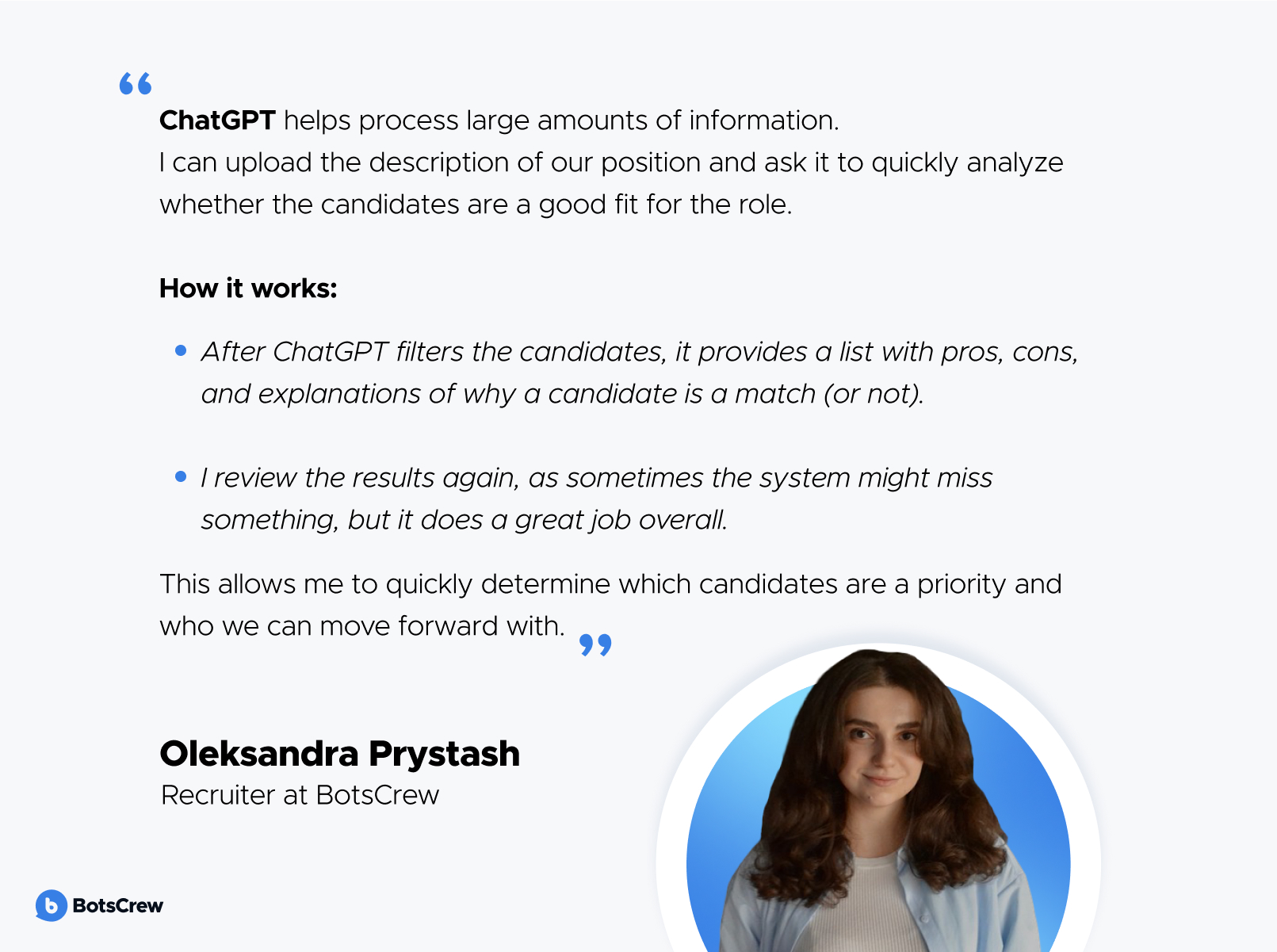
#3. Learning and Development
AI is reshaping how companies approach learning and development. Instead of one-size-fits-all training, HR teams can now deliver personalized learning experiences, identify emerging skill gaps early, and track progress in real time.
Here is how AI is transforming L&D:
✅ Spotting skill gaps before they become problems. AI analyses performance data, job roles, and learning history to flag areas where employees may be falling behind. This helps HR teams prioritise learning initiatives based on real needs — not assumptions.
✅ Delivering personalised learning journeys. No two employees learn the same way. An AI onboarding assistant and other AI-powered platforms tailor training content to individual learning styles, career goals, and current skill levels, ensuring people get what they need and when they need it.
✅ Measuring impact in real time. Machine learning algorithms track engagement, completion rates, and outcomes across programs. This gives HR leaders real-time insights into what is working — and what's not — so they can fine-tune learning strategies as they go.
✅ Creating tailored training content with generative AI. Need training for a niche tool or internal process? Generative AI can produce custom content that reflects your organisation's tone, systems, and goals, saving time while staying aligned with business needs.
#4. Performance Management
Traditional performance reviews are often outdated by the time they happen — biased, backward-looking, and too infrequent to drive meaningful development. AI is transforming performance management into a continuous, data-informed process that supports real growth, fairness, and retention.
Key applications:
✅ Automated, data-enriched performance reviews. AI aggregates input from multiple sources — peer feedback, project outcomes, KPIs, 1:1 notes, even sentiment analysis — to generate more balanced, evidence-based reviews.
✅ Bias detection & language coaching. Research shows that male recruiters tend to rate male candidates more favorably, and attractive applicants are nearly twice as likely to be hired, regardless of actual qualifications. AI tools can help level the playing field by bringing objectivity into the selection process and reducing the influence of subjective factors.
For instance, solutions can analyze job descriptions for bias, flagging gendered or exclusionary language, overly complex phrasing, and excessive length. Or even enable blind auditions, where candidates are evaluated based on how they solve real tasks, without revealing their name, gender, background, or photo.
✅ Real-time goal & OKR tracking. Platforms like PeopleHR, Lattice, Betterworks, and 15Five use AI to track progress on OKRs, flag stalled goals, and prompt timely check-ins. Visibility into goal alignment helps employees see how their work contributes to broader objectives, boosting motivation and accountability.
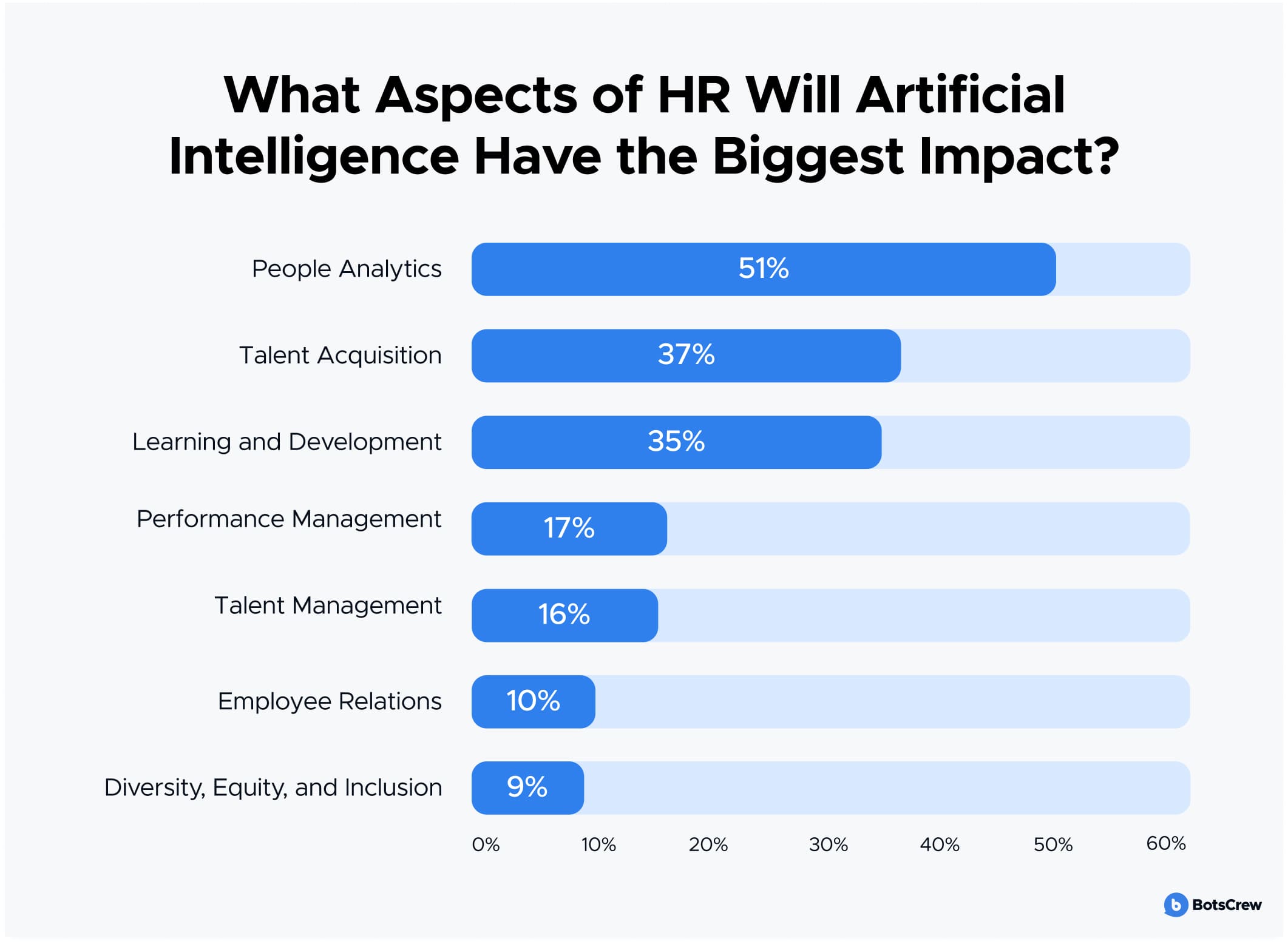
On the Flip Side: Challenges and Considerations of AI in HR
AI has enormous potential in HR. However, before rolling it out across the board, it's essential to understand its limitations, risks, and the unintended consequences that can come with fast adoption. Fortunately, the HR professionals we surveyed aren't going in blind. Many already recognize several key concerns:
#1. Rushing Into AI Without the Know-How
With generative AI tools gaining ground at lightning speed, many teams have jumped into adoption without fully grasping the technology. Nearly half (48%) of HR professionals said they were concerned that the lack of understanding or overly rapid deployment could lead to misuse.
From data leaks and human error to AI hallucinations — where systems produce confident but completely false information — organizations are already facing the fallout. These aren't edge cases; they are real-world risks that come with deploying powerful tools without proper training or governance.
✅ What to do: Before scaling AI, HR leaders need to define clear internal guidelines, train teams on responsible use, and treat implementation like any other transformation initiative — with pilots, education, and oversight.
#2. Reinforcing Existing Biases Instead of Removing Them
While AI can reduce human bias, it can also inherit the biases of its creators or training data. A well-known example is Amazon's experimental recruiting tool, which was scrapped in 2018 after it was found to disadvantage female candidates, reflecting historical patterns in hiring data that favored men.
Another case comes from the U.S. justice system. The COMPAS algorithm, widely used to predict the likelihood of reoffending, showed racial bias in its predictions. An investigation by ProPublica revealed that the system disproportionately flagged black defendants as high risk, even when their actual rates of recidivism were lower than those of white defendants with similar profiles.
✅ What to do: Make sure your AI systems are built on diverse, representative datasets and audited regularly for bias. Pair AI decisions with human review, especially in high-stakes areas like hiring or promotions.
🚷 Is AI Going to Replace HR?
It is the question on everyone's mind. But the answer is simple:
No, AI won't replace HR.
While artificial intelligence is transforming how we recruit, develop, and support employees, it can't replicate the human sensitivity, empathy, and intuition at the heart of effective HR. Human Resources is, and always will be, about people.
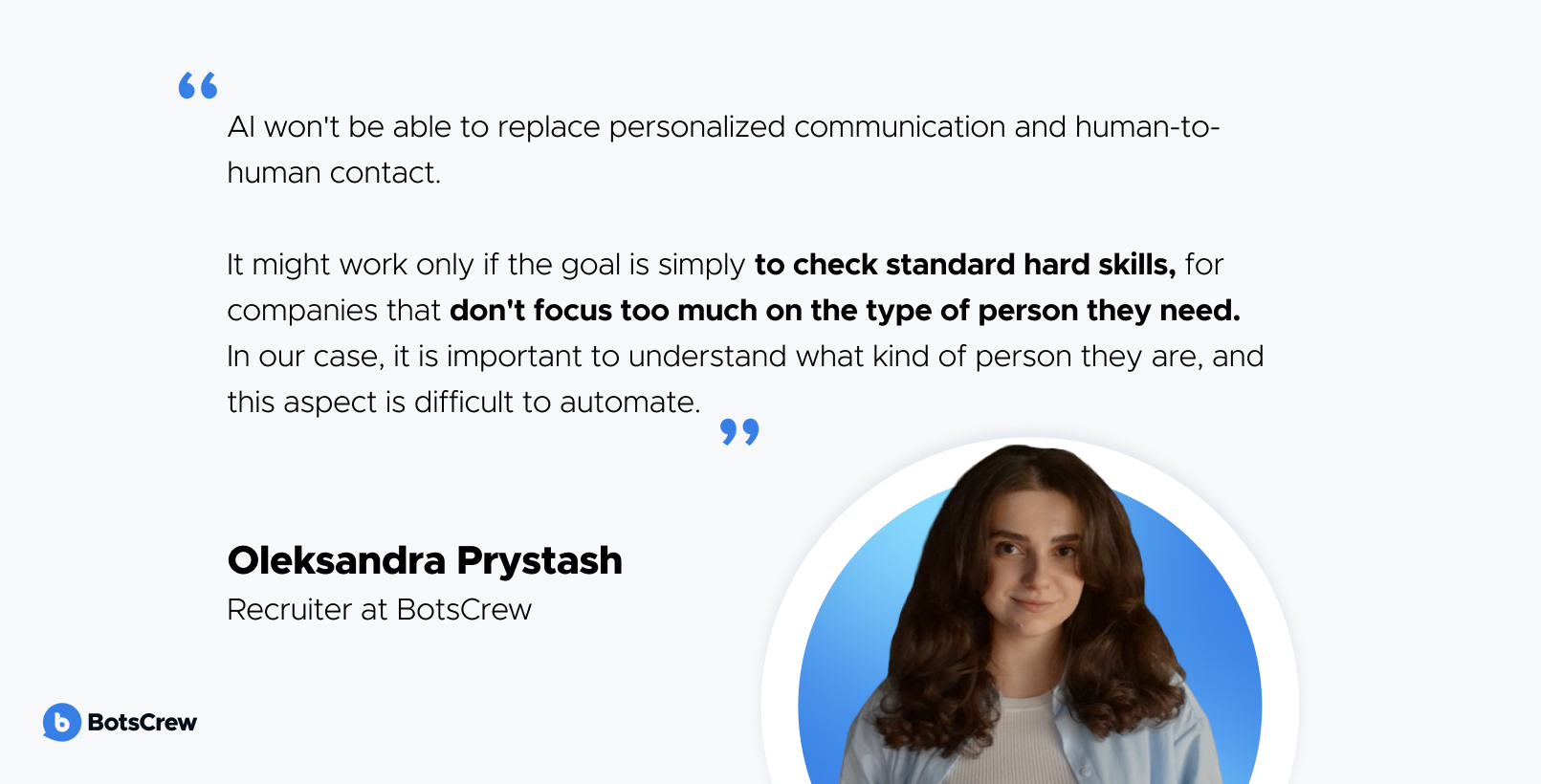
Furthermore, AI is creating entirely new roles, too. As technology evolves, so will the HR profession. We are already seeing the rise of future-focused roles like:
- HR Data Detective — uncovering patterns and insights hidden in workforce data.
- Human-Machine Collaboration Manager — helping teams work seamlessly with AI tools.
- Bias Auditor — ensuring AI systems make fair, inclusive decisions.
The future isn't about humans vs. machines, but humans empowered by machines.
Ready to Transform Your HR Function with AI? AI can support your HR department in: Eliminating inefficient processes → Reducing data errors and inconsistencies → Automating repetitive administrative tasks → Speeding up decision-making and results → Minimizing human bias in hiring and reviews → Strengthening compliance → Driving long-term cost savings.




